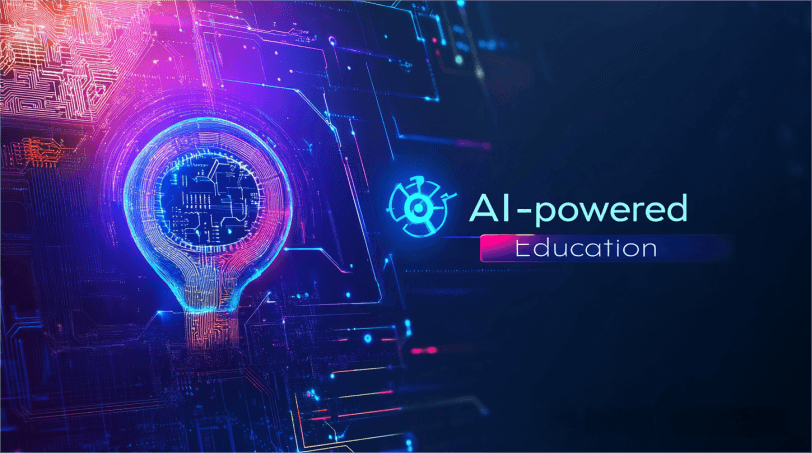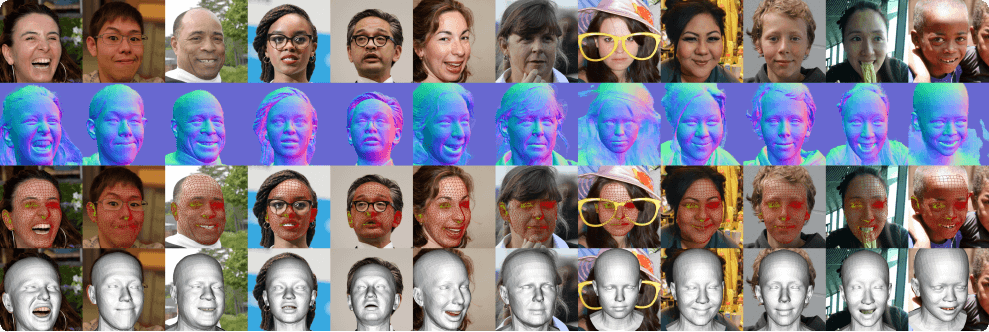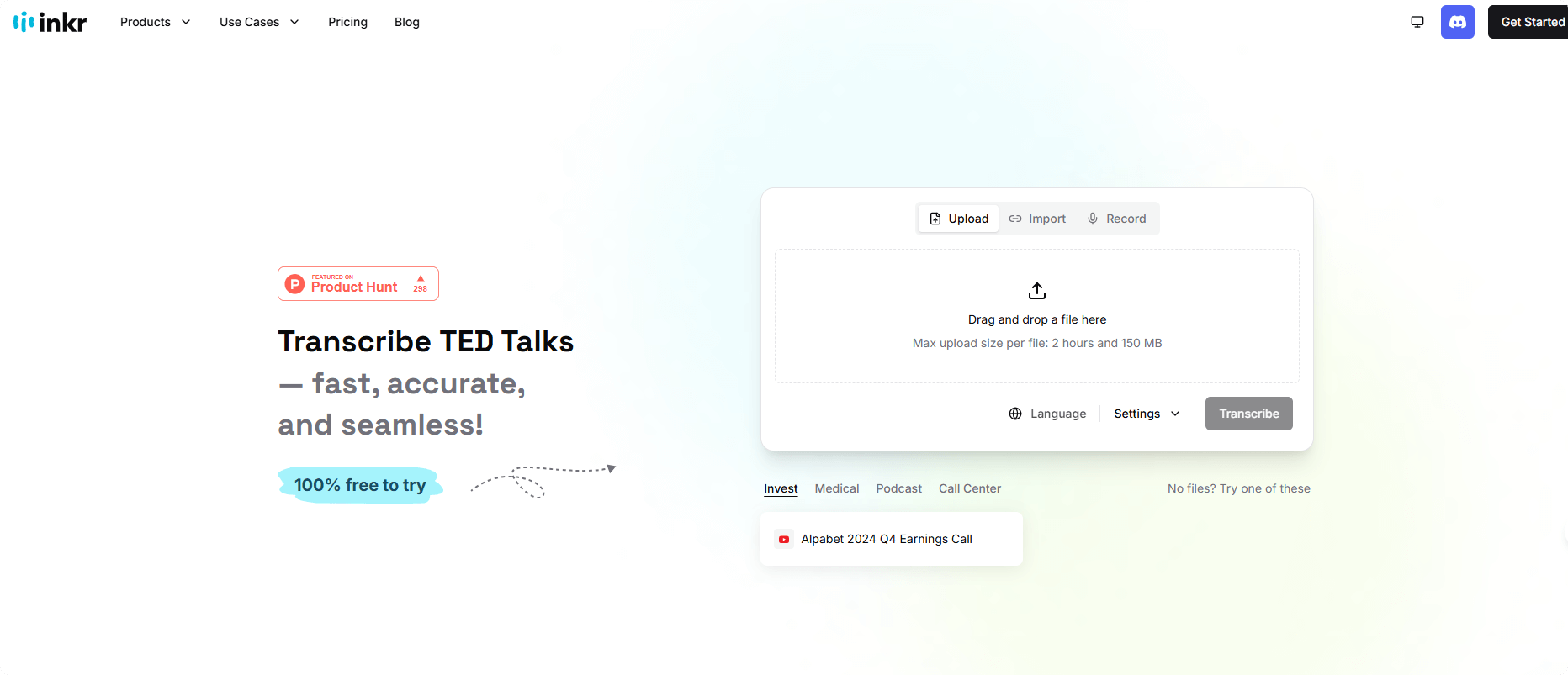Artificial Intelligence is rapidly reshaping the future of education. From personalized learning to automated management, from enhancing learning engagement to improving the quality of education, AI is breaking down the barriers of traditional education and fundamentally transforming the way teaching and learning are conducted. All these indicate a more personalized, efficient, and inclusive future for education.

Nine Advantages of AI Empowering Education
Integrating AI into the classroom enables educators to personalize learning experiences, streamline administrative tasks, and provide more effective support for students. AI brings the following specific advantages to the field of education:
- Enhance personalized learning: AI customizes educational content according to each student’s unique learning style and pace. For example, platforms such as Khanmigo, DreamBox, and Smart Sparrow can analyze students’ responses in real time to dynamically adjust the curriculum, enabling each student to master concepts at their own pace.
- Automating educational administrative tasks: Utilize AI to automatically perform tasks such as grading, scheduling, and report generation, thereby significantly reducing the workload of educators. Tools like Gradescope can grade assignments consistently and objectively, while AI scheduling software can help optimize class schedules and resource allocation.
- Enhancing Learners’ Engagement: AI makes learning more interactive and engaging through gamified content and adaptive learning platforms. Programs like Kahoot! and Minecraft: Education Edition utilize AI to create interactive quizzes and simulations that respond to students’ input, thereby maintaining learners’ motivation and engagement.
- Improve Accessibility: AI-driven assistive technologies provide support for students with disabilities, ensuring a more inclusive learning environment. Speech recognition software such as Notta transcribes spoken language into text, assisting students with hearing impairments. AI-supported educational games offer personalized learning experiences for young children.
- Provide actionable insights: AI analyzes a vast amount of educational data to provide actionable insights for educators. Platforms like Knewton Alta track students’ performance across various metrics, helping teachers identify learning gaps and adjust their teaching strategies accordingly.
- Improve classroom management efficiency: AI tools can assist teachers in managing classroom behavior and student engagement. For example, HMH Classcraft utilizes AI to gamify classroom management by tracking student behavior and rewarding positive actions, which helps maintain an efficient and positive classroom environment.
- Enhancing Security and Assessment Integrity: AI enhances the security and integrity of assessments through advanced proctoring and plagiarism detection. Tools like Turnitin check the originality of students’ submitted work, while AI-powered proctoring systems monitor the examination environment to prevent cheating.
- Support lifelong learning and professional development: AI supports the continuous learning and professional development of educators by recommending personalized resources and courses. Platforms like Edthena provide tailored learning paths based on educators’ career goals and teaching needs.
- Greater Scalability: AI can expand educational programs to accommodate more students without compromising quality. AI-based platforms can process large amounts of data and provide personalized learning experiences for an increasing number of learners, thereby ensuring accessibility and consistency in education.
35 Application Scenarios of AI in the Field of Education
AI is thoroughly transforming education through various cutting-edge tools that can enhance teaching and learning outcomes. From personalized experiences to optimizing administrative tasks, here are 39 application scenarios where AI is reshaping modern education:
- Adaptive Learning: An AI-driven platform can assess students’ skill levels in real time and customize teaching content to meet individual needs. These systems dynamically adjust the curriculum based on students’ responses, providing personalized learning paths to help students master concepts at their own pace.
- Assistive technologies: Tools such as speech recognition software can transcribe spoken language into text, thereby helping students with disabilities such as hearing impairments or reading difficulties to participate more fully in classroom activities by converting speech into text and vice versa.
- Data and Learning Analytics: Analyze data from online learning portals, classroom attendance, and grades through AI. This data provides valuable insights into student performance, enabling educators to identify trends and tailor instruction to bridge gaps in understanding and performance.
- Classroom Management: Use AI to gamify classroom management. AI can track students’ behaviors and engagement, reward positive behaviors with points and badges, and provide teachers with insights into classroom dynamics to manage and motivate students.
- Intelligent Tutoring System: AI-powered tutoring systems (such as Carnegie Learning) provide personalized feedback and support, adapt to individual learning styles and needs, and help students understand complex concepts and improve academic performance.
- Automated Grading and Assessment Tools: These tools utilize AI to evaluate assignments and provide detailed feedback, thereby streamlining the grading process, ensuring consistency, and saving teachers’ time. AI can also grade more abstract assessments, such as essays, by analyzing the content’s consistency and relevance.
- Chatbots and Virtual Assistants: AI-powered chatbots (such as Mainstay) can provide students with immediate support and assistance outside the classroom. These chatbots can answer questions, remind students of deadlines, and guide them through administrative processes, thereby increasing engagement and promoting independent learning.
- Course Planning: By analyzing educational data to identify trends and gaps, AI assists educators in planning courses. This ensures that the curriculum remains relevant, comprehensive, and aligned with learning objectives, by updating it according to the latest educational needs and standards recommendations.
- Interactive and Learning Games: AI enhances educational games by creating engaging adaptive learning experiences. These games utilize AI to provide tasks and challenges that adapt to students’ responses, thereby promoting active engagement and understanding of complex subjects.
- Personalized Learning: AI learning platforms create customized learning experiences by adapting to the unique ways students understand concepts. This can reduce cognitive load and ensure that each student receives instruction tailored to their learning style and pace.
- Task Automation: Leverage AI to automate daily tasks such as homework grading, test scoring, and report generation. This enables educators to focus on more meaningful teaching activities and interactions with students.
- Intelligent Content Creation: Utilize AI to assist teachers in creating digital courses and learning materials. Tools such as Magic School AI and Eduaide.AI can simplify course planning, create assessments, write Individualized Education Programs (IEPs), etc., thereby modernizing learning and streamlining teaching.
- Proctoring: AI-driven proctoring systems can monitor examinations to prevent cheating and ensure academic integrity. These systems can analyze students’ behavior during the exam, provide real-time alerts for suspicious activities, and maintain a secure testing environment.
- Language Learning: AI tools such as Duolingo use adaptive algorithms to personalize the language learning experience. AI adjusts the difficulty of exercises based on the user’s progress, thereby ensuring an optimal learning curve and enhancing language acquisition.
- Bridging the Skill Gap: Leveraging AI to analyze students’ performance data to identify their skill gaps and provide targeted resources to address these deficiencies. This can help learners master knowledge in various subjects and prepare them for future academic challenges.
- Reading Difficulty Detection: AI tools such as Dysolve can detect reading disabilities and other learning difficulties at an early stage by analyzing reading patterns and errors. These tools provide tailored support and intervention measures to help affected students succeed, such as specialized reading programs and exercises.
- Education, Entertainment and Gamification: Integrate game elements into teaching content through AI to make learning interesting and engaging. The platform uses AI to create interactive quizzes and games to promote a deeper understanding and memory of educational materials.
- Educational Administrative Support: Utilize AI to assist with administrative tasks such as scheduling, budget preparation, and resource allocation. Tools like Fetchy provide data-driven insights and recommendations to optimize educational operations, thereby enhancing efficiency and reducing the workload of educators.
- Virtual 3D Classroom: The metaverse creates immersive virtual classrooms where students can interact with their peers and teachers. Platforms like Engage VR provide virtual environments that can go beyond traditional methods to enhance the learning experience, thus offering opportunities for interactive and experiential learning.
- Digital Learning: Enhance the digital classroom by providing immersive video content and interactive simulations through AI. Tools like Nearpod use AI to deliver engaging and effective learning experiences through interactive lessons and real-time student feedback.
- Virtual Campus Activities: Leveraging AI to Promote Virtual Extracurricular Activities, enabling students to participate in clubs and activities from anywhere in the world. Platforms like Remo utilize AI to create virtual spaces for socializing and collaboration, thereby enhancing student engagement outside the classroom.
- Interdisciplinary Learning: Leveraging AI to break down barriers between disciplines and promote interdisciplinary learning. Tools like Wolfram Alpha use AI to demonstrate the practical applications of various theories, thereby helping students understand the interconnections between different research fields.
- Simulate real scenarios: Use AI to replicate real scenarios in a virtual environment, enabling students to conduct experiments and learn through hands-on experience. Platforms like Labster offer virtual laboratories where students can safely explore and test scientific concepts.
- Raise awareness: Use AI to teach students about social issues such as climate change and poverty. Tools like EarthSpeakr utilize AI to provide profound emotional understanding as well as theoretical knowledge, thereby enhancing awareness and action on global challenges.
- Virtual Journeys: AI-powered virtual journeys enable students to explore the world from their classrooms. Platforms like Google Expeditions use AI to create immersive virtual field trips, broadening students’ horizons and enhancing their cultural understanding. These virtual travels can also be used to facilitate virtual university tours.
- Guest Speakers and Events: Facilitate virtual events and guest lectures, enabling students to learn from renowned individuals and experts in various fields. Tools like BigMarker utilize AI to organize and manage virtual meetings, thereby enhancing the learning experience through expert insights.
- Predictive Analysis: AI algorithms in learning analytics can help educators identify trends and predict students’ performance, enabling early intervention for students who may encounter difficulties.
- Parent-teacher communication: AI-driven tools such as Remind can facilitate seamless communication between parents and teachers, so as to update students’ progress and classroom activities in real time, thereby enhancing parents’ engagement and support for the educational process.
- Exam Preparation: AI platforms like Magoosh provide personalized exam preparation by analyzing students’ performance and adjusting practice questions and study plans to focus on the areas where students need the most improvement, thereby increasing their chances of success.
- Learning Management System (LMS): Leverage AI to provide personalized learning paths, automate management tasks, and offer data-driven insights into student performance and engagement to enhance the LMS platform.
- Professional Development: Recommend courses and resources for educators’ career goals and teaching needs through AI tools, thereby providing them with personalized professional development opportunities.
- Plagiarism Detection: By using AI tools to compare the works submitted by students with a vast academic content database, it analyzes whether there are potential acts of plagiarism, thereby ensuring academic integrity and the originality of students’ works.
- Enhanced Online Discussion Forums: Enhance online discussion forums by moderating content, facilitating discussions, and providing personalized feedback. Tools like Packback utilize AI to encourage critical thinking and engagement in online forums, thereby creating a more vibrant and interactive learning environment.
- Academic Research: Analyze large datasets, identify trends, and generate insights to assist in academic research. AI tools such as IBM Watson Discovery provide researchers with advanced analytical capabilities, helping them make new discoveries and accelerate the research process.
- Interconnected Campus: Integrates various campus systems to create an interconnected and efficient educational environment. Tools such as Cisco Digital Network Architecture (DNA) utilize AI to manage and optimize campus infrastructure, thereby enhancing connectivity and improving the overall campus experience.
Conclusion:
The application of artificial intelligence in the field of education represents a profound transformation. It not only heralds the future of educational methods but also provides unprecedented opportunities in the present. Although we still need to address issues such as data privacy, ethical concerns, and potential lack of personalization during implementation, the immense potential of AI cannot be overlooked. Through innovative tools such as intelligent tutoring systems, adaptive learning platforms, and virtual reality classrooms, AI can meet the needs of individuals with diverse learning styles and preferences, thereby achieving true personalized education.
With the continuous advancement of technology and the ever-expanding range of application scenarios, artificial intelligence will play an increasingly important role in the field of education. We have reason to believe that a more personalized, efficient, and inclusive educational future is on the horizon, and artificial intelligence will be the key driving force to achieve this goal. By thoughtfully and responsibly leveraging artificial intelligence, we can maximize its advantages in education, creating greater value for students and society.
Related Posts




